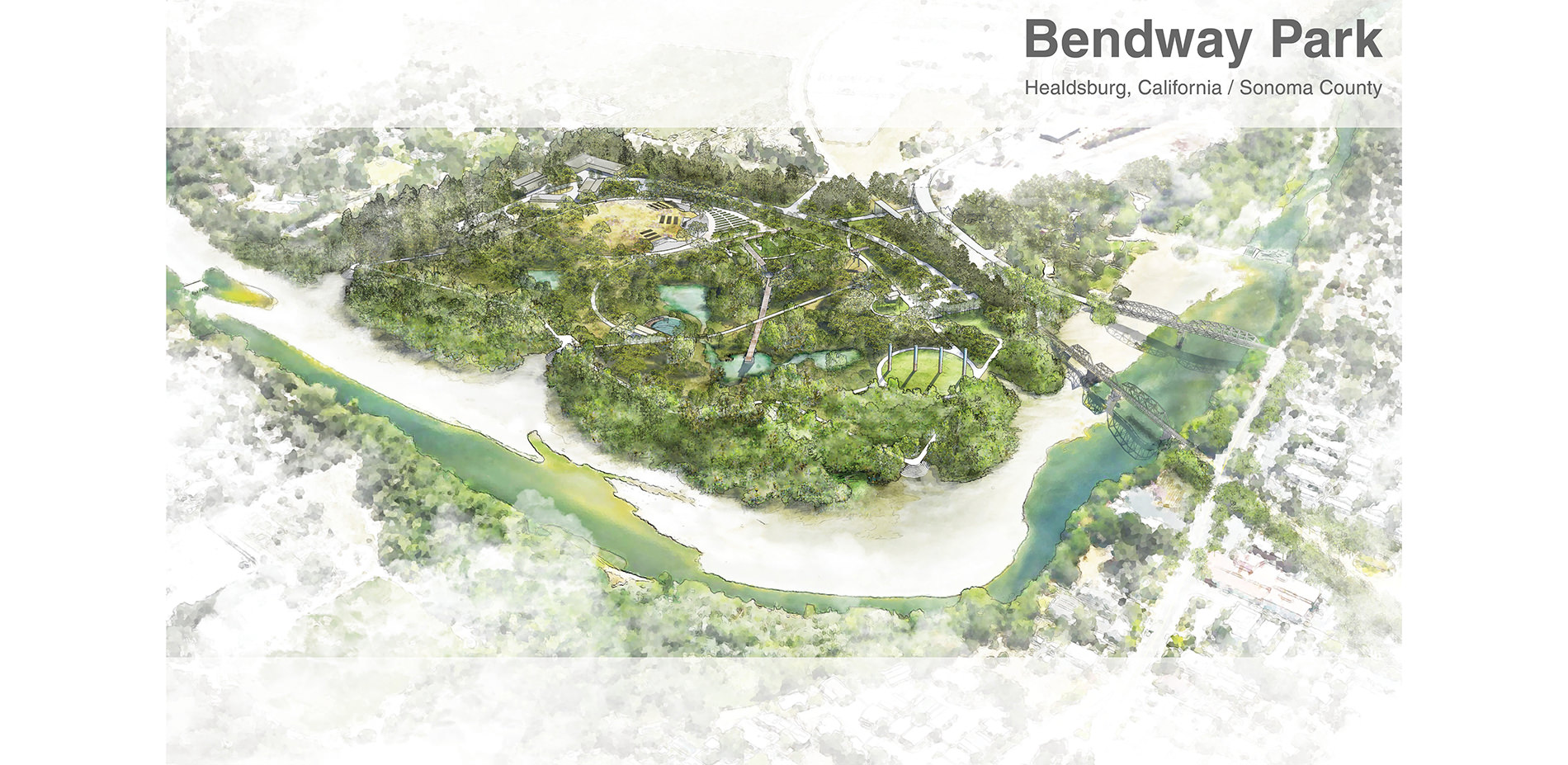
Bendway Park is a proposal for the revitalization of over 100 acres of inaccessible industrial zoned riverfront in Healdsburg that will revive ecology, strengthen the local economy and, relink the community with their river.
Photo Credit: Eric Arneson
Media: Please submit high-resolution image requests to images@asla.org.
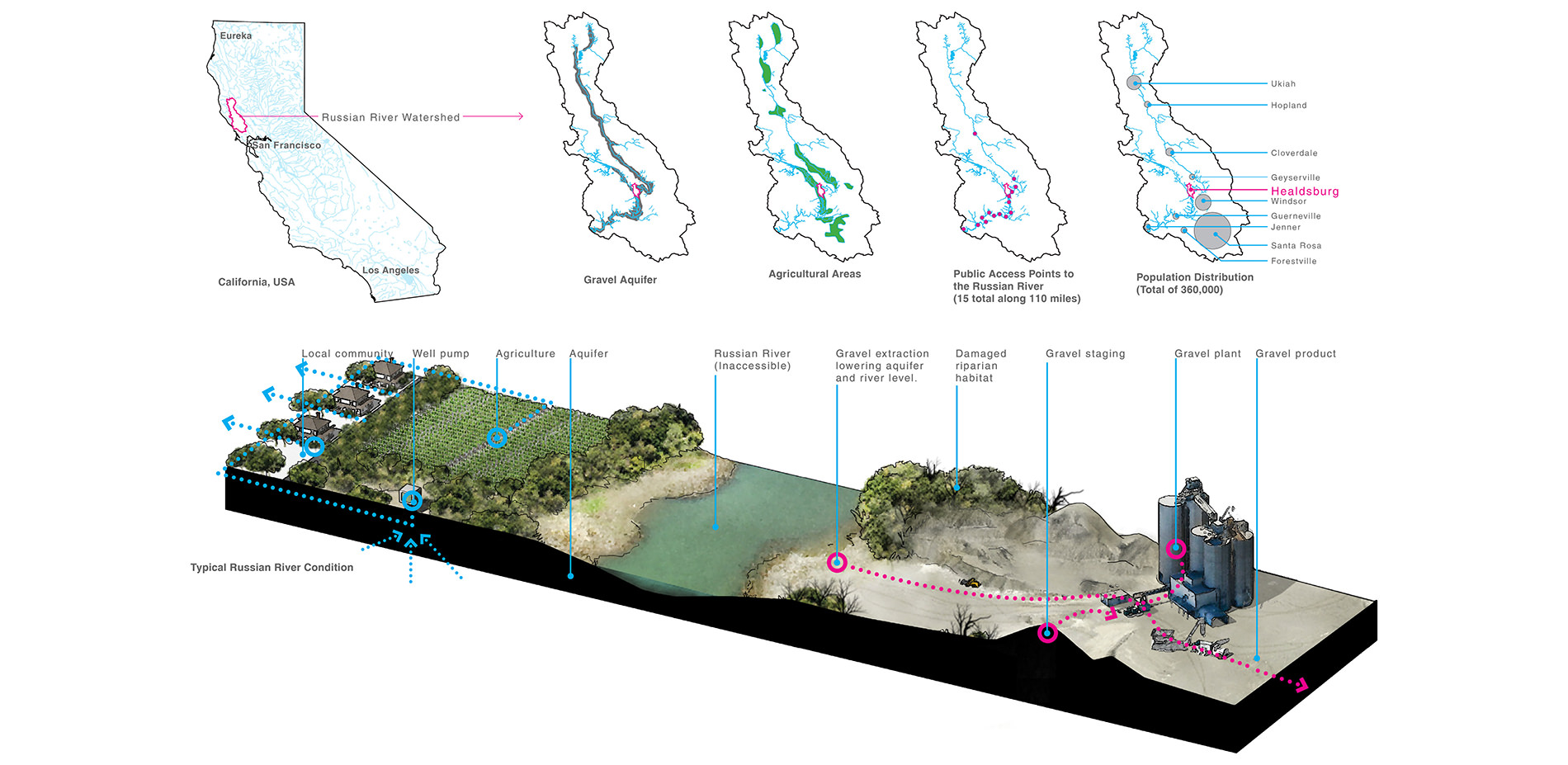
The agricultural and gravel mining industries have monopolized riverfront spaces resulting in only 15 area that are accessible to the public along the entire 110 miles of the river.
Photo Credit: Eric Arneson
Media: Please submit high-resolution image requests to images@asla.org.

Healdsburg’s ideal climate, food, wine and small town charm have established it as a nationally acclaimed tourist destination.
Photo Credit: Eric Arneson
Media: Please submit high-resolution image requests to images@asla.org.

Recently, the area encompassing the Bendway and Syar Industries has undergone significant changes directed by the city’s General Plan. This development brings renewed attention to the derelict site and its eventual transformation.
Photo Credit: Eric Arneson
Media: Please submit high-resolution image requests to images@asla.org.

Meetings with local community members and landscape architects provided crucial insight into the needs and opinions of the people that will be using this site. It is clear that people want a strong connection between the town and the river.
Photo Credit: Eric Arneson
Media: Please submit high-resolution image requests to images@asla.org.
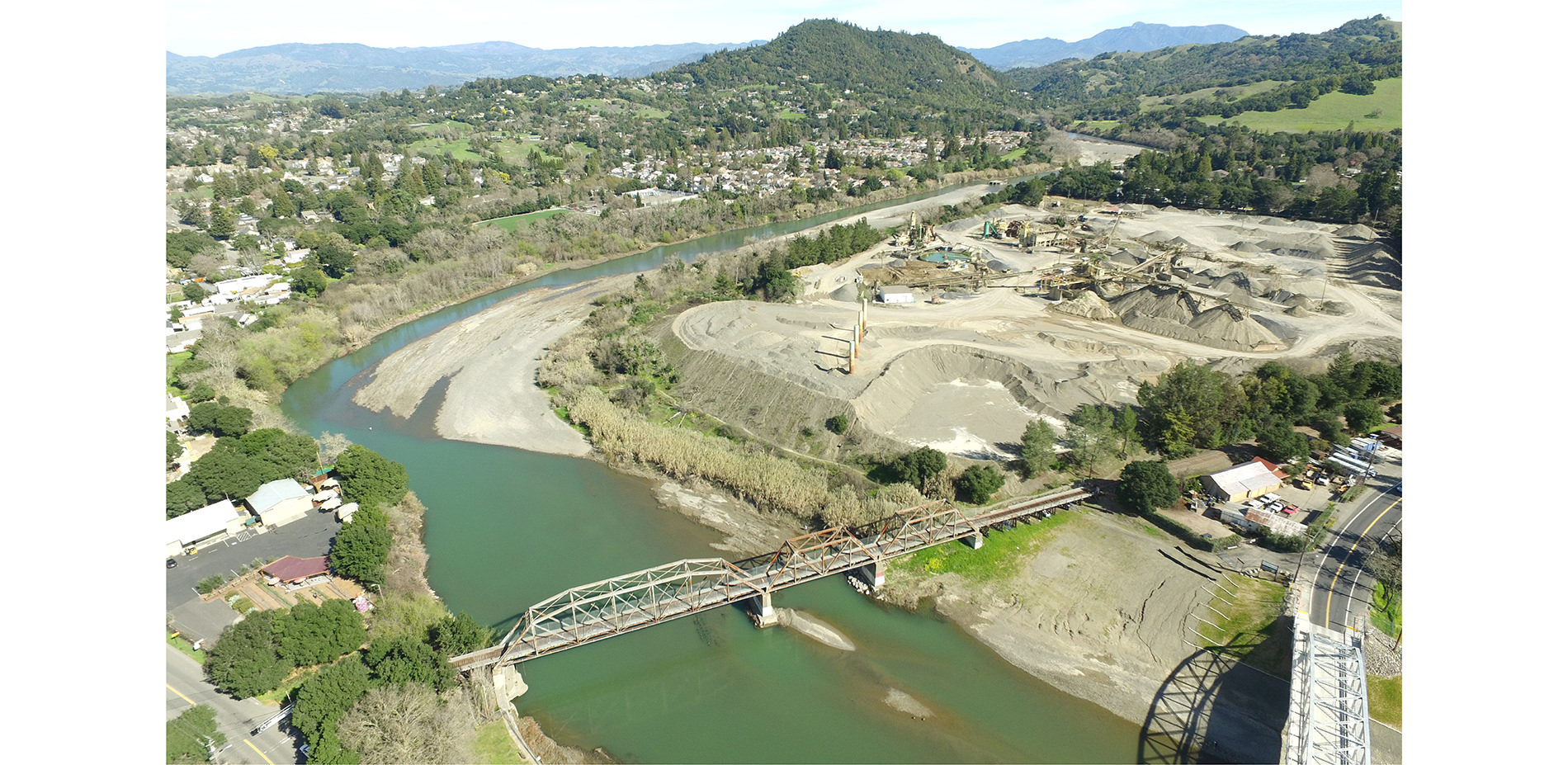
The current state of the Bendway is a stark juxtaposition of a fleeting riparian habitat being crushed by massive gravel piles and steel structures. All the riverfront shown is impossible to access without trespassing and maneuvering hazardous unstable gravel paths.
Photo Credit: Eric Arneson
Media: Please submit high-resolution image requests to images@asla.org.

The Bendway Park design strategically integrates repurposed and proposed elements into a riparian habitat restoration to provide the community with a magnificent, safe, and accessible river front park.
Photo Credit: Eric Arneson
Media: Please submit high-resolution image requests to images@asla.org.
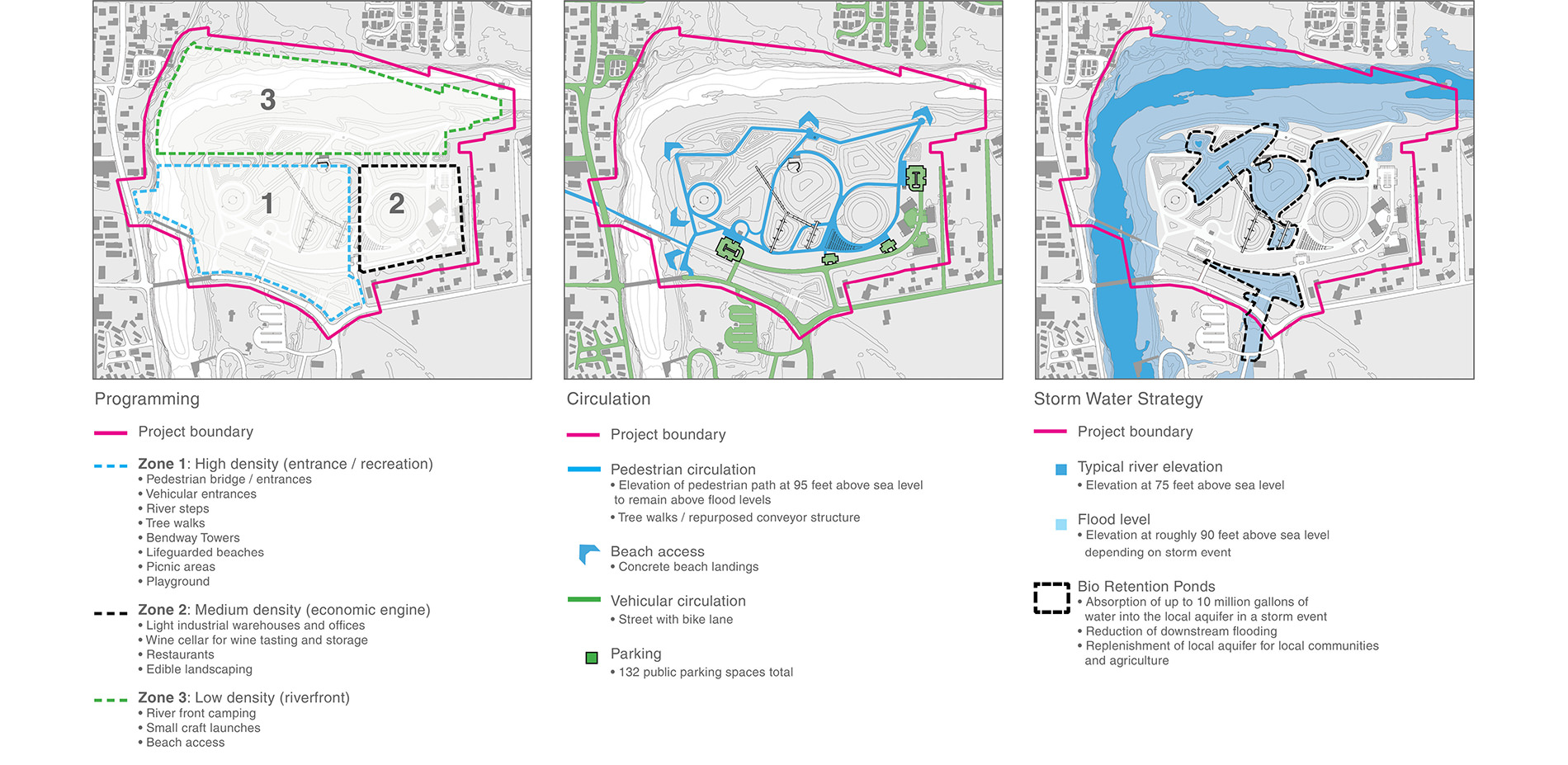
The study of the current and projected economic, environmental, and social issues has resulted in the design of three distinct activity zones structured by circulation, a storm water system, and planting design.
Photo Credit: Eric Arneson
Media: Please submit high-resolution image requests to images@asla.org.
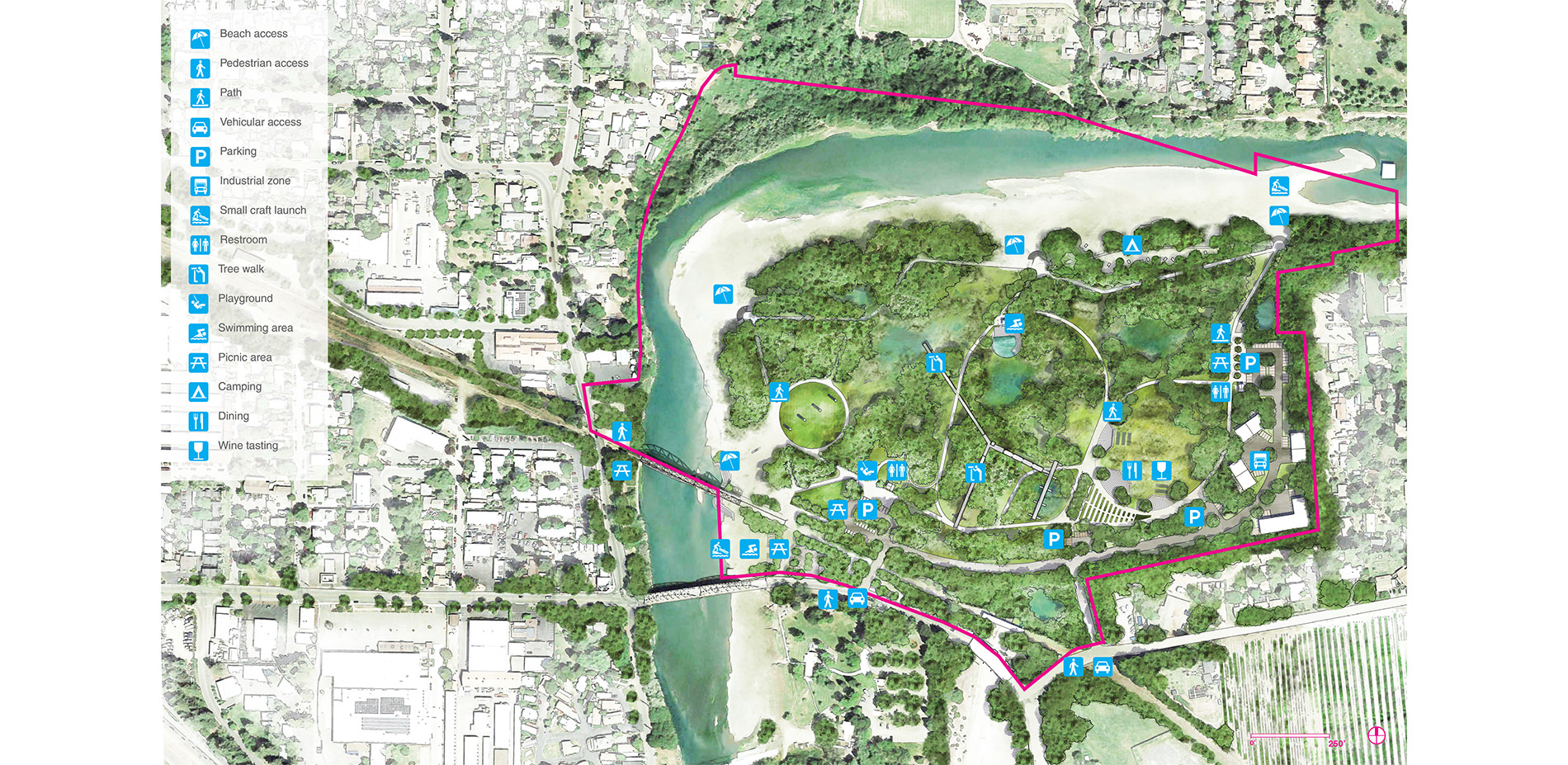
With its wide variety of programming, spaces and, scenic beauty Bendway Park will serve as a premier regional destination drawing in thousands of users yearly and bolstering the local economy.
Photo Credit: Eric Arneson
Media: Please submit high-resolution image requests to images@asla.org.
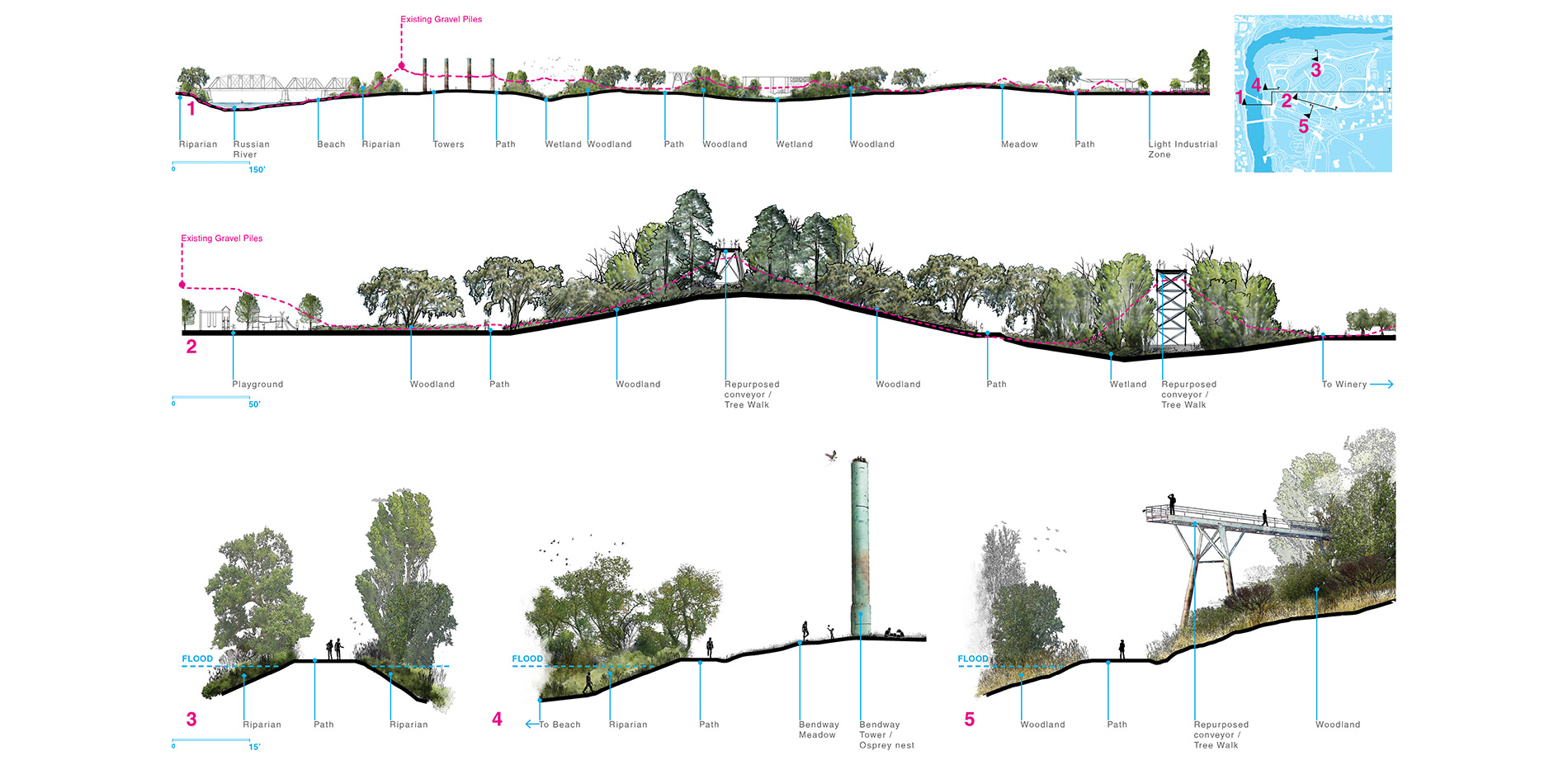
In this proposal the massive existing gravel piles have been removed and the site sculpted to create a year round walkable space surrounded by a mosaic of thriving native habitats.
Photo Credit: Eric Arneson
Media: Please submit high-resolution image requests to images@asla.org.
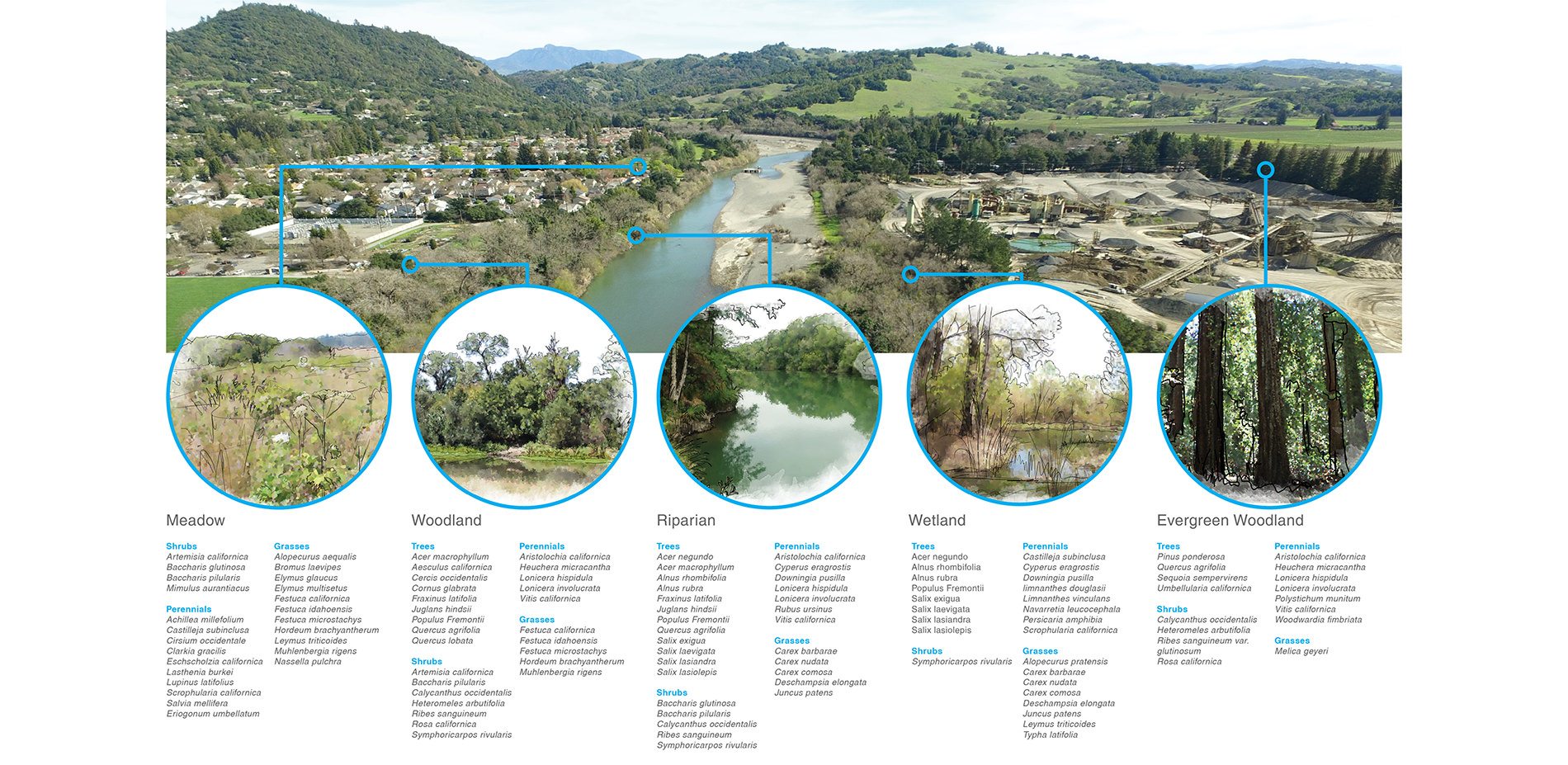
Contextual plant studies resulted in the creation of distinct plant zones strategically and appropriately placed with each serving as the catalyst for an extensive habitat restoration.
Photo Credit: Eric Arneson
Media: Please submit high-resolution image requests to images@asla.org.

Native plantings have been integrated with the repurposed postindustrial landscape of Bendway Park as a celebration of the sites reclamation.
Photo Credit: Eric Arneson
Media: Please submit high-resolution image requests to images@asla.org.
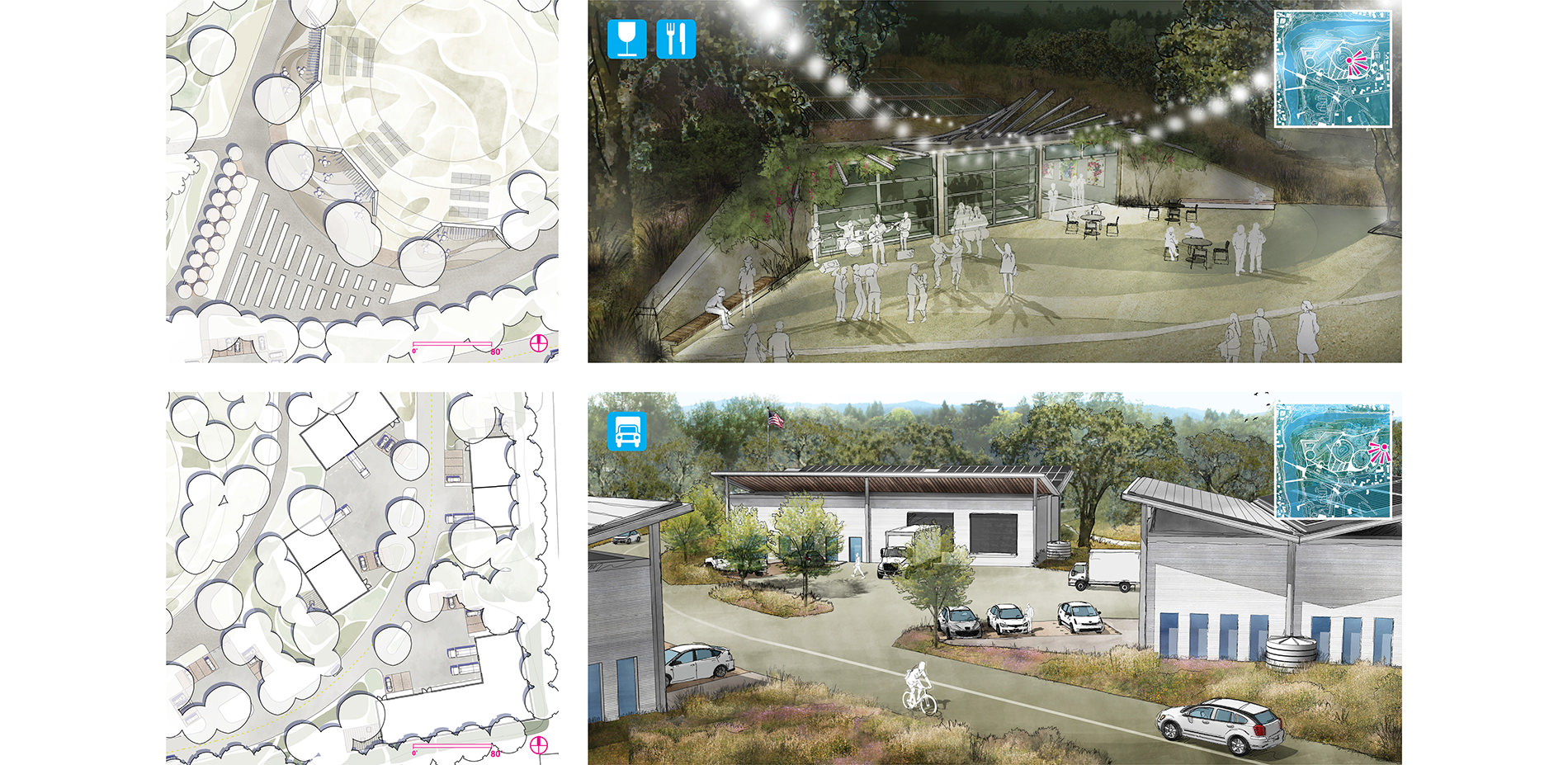
Wine cellars inspired by the existing industrial structures host a dining and wine tasting experience under the shade of oaks and surrounded by flowing native meadows. Four warehouses invite businesses such as wine production and bottling.
Photo Credit: Eric Arneson
Media: Please submit high-resolution image requests to images@asla.org.
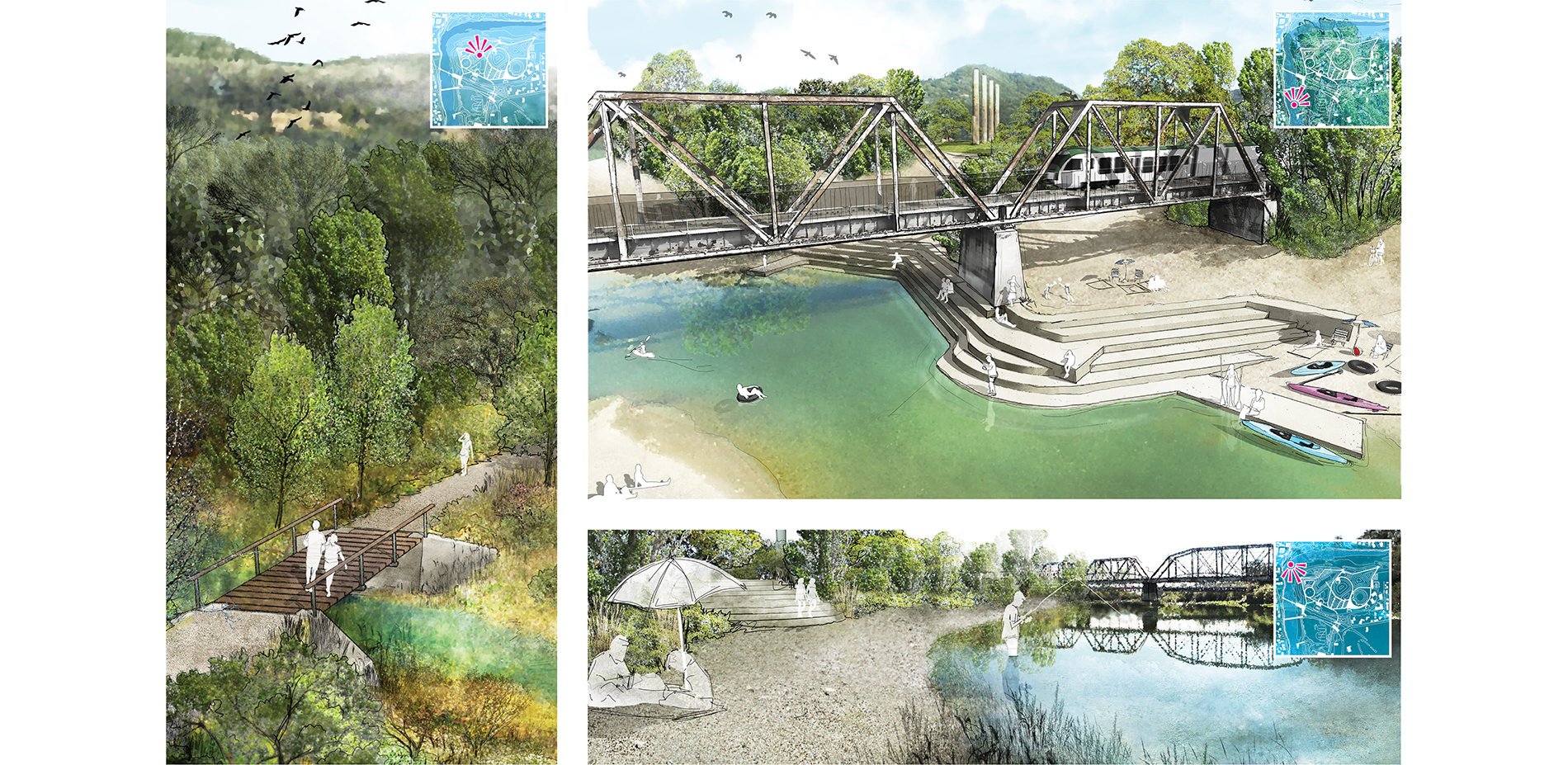
The once hazardous and inaccessible quarter mile stretch of riverfront at the Bendway is now a flourishing realm of recreation and lush riparian habitat. Repurposed and proposed design elements embrace seasonal river changes to guarantee a resilient lasting design.
Photo Credit: Eric Arneson
Media: Please submit high-resolution image requests to images@asla.org.

The Bendway Towers have become the symbol of the park and provide a visual link to the town. Overhead conveyors have been repurposed as tree walks immersing visitors into a California woodland with panoramic views of the site and beyond.
Photo Credit: Eric Arneson
Media: Please submit high-resolution image requests to images@asla.org.


















